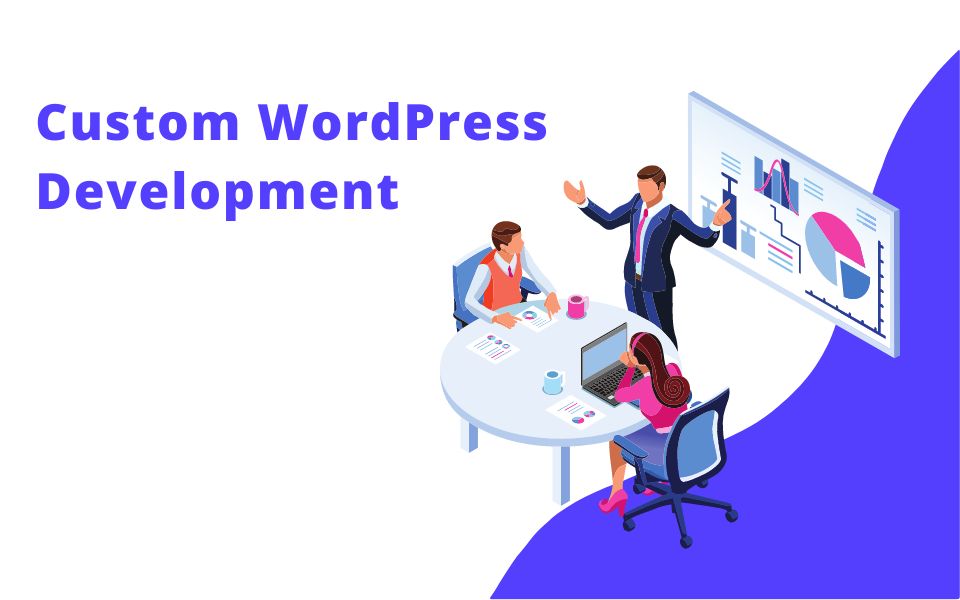In today’s digital age, having a strong online presence is crucial for businesses and individuals alike. WordPress, as one of the most popular content management systems (CMS) in the world, offers a powerful platform for building and managing websites. While WordPress comes with a plethora of features and functionalities out of the box, sometimes you may need to go beyond the standard options and customize your website to meet specific requirements. This is where custom WordPress development comes into play.
Understanding Custom WordPress Development
Custom WordPress development involves creating unique themes, plugins, and functionalities tailored to a website’s specific needs. Whether you’re a developer looking to enhance your skills or a business owner wanting to take your website to the next level, understanding the fundamentals of custom WordPress development is essential.
Benefits of Custom WordPress Development
- Tailored Solutions: Custom development allows you to create a website that aligns perfectly with your brand identity and business goals.
- Enhanced Performance: By optimizing code and eliminating unnecessary features, custom development can improve your site’s speed and performance.
- Scalability: Custom solutions are more flexible and scalable, making it easier to add new features as your business grows.
- Security: Custom code reduces the risk of vulnerabilities that can arise from using off-the-shelf themes and plugins.
- Unique User Experience: Stand out from the crowd with a unique design and user experience that sets your website apart.
Getting Started with Custom WordPress Development
To embark on your custom WordPress development journey, follow these steps:
Step 1: Set Clear Objectives
Define your website’s goals, target audience, and desired features to guide the development process.
Step 2: Choose the Right Tools
Select the necessary tools and technologies based on your project requirements, such as code editors, version control systems, and local development environments.
Learn WordPress Development Basics
Familiarize yourself with PHP, HTML, CSS, and JavaScript – the core languages used in WordPress development.
Understand the WordPress Codex
Refer to the official WordPress Codex for comprehensive documentation on WordPress functions, hooks, and best practices.
Customizing Themes in WordPress
Themes control the overall look and feel of a WordPress website. Customizing themes allows you to create a unique design that reflects your brand identity. Here are some tips for customizing themes:
Child Themes
Create a child theme to make changes to your theme without altering the original files, ensuring easy updates in the future.
Custom CSS
Use custom CSS to style elements of your theme according to your preferences without modifying the theme files directly.
Theme Hooks
Take advantage of theme hooks to insert custom code at specific locations within your theme.
Developing Custom Plugins in WordPress
Plugins extend the functionality of a WordPress website. Developing custom plugins enables you to add specific features that are not available in existing plugins. Follow these steps to create custom plugins:
Plugin Structure
Organize your plugin files according to WordPress standards, including the main plugin file, asset directories, and necessary PHP files.
Hooks and Filters
Utilize action hooks and filters to interact with WordPress core functions and modify behavior as needed.
Security Considerations
Follow security best practices, such as data validation, sanitization, and escaping output to prevent vulnerabilities in your plugin.
Section 6: Integrating Third-Party APIs
Integrating third-party APIs can enhance the functionality of your WordPress website by connecting it to external services. Here’s how to integrate third-party APIs:
API Authentication
Follow the authentication process specified by the API provider to securely access their services from your website.
API Requests
Send HTTP requests to the API endpoints using libraries like cURL or wp_remote_get for data retrieval and manipulation.
Data Handling
Process the API responses accordingly, parse JSON or XML data, and display the information on your website as needed.
Section 7: Performance Optimization in Custom Development
Optimizing performance is crucial for ensuring a seamless user experience on your WordPress website. Consider the following strategies for performance optimization:
Caching
Implement caching mechanisms using plugins like WP Super Cache or W3 Total Cache to reduce server load and improve page load times.
Image Optimization
Compress images, lazy-load content, and utilize responsive images to minimize load times and bandwidth usage.
Code Efficiency
Write efficient code, eliminate unnecessary queries, optimize database interactions, and leverage caching where possible.
Testing and Debugging
Thorough testing and debugging are essential steps in custom WordPress development to ensure the stability and functionality of your website. Follow these best practices:
Testing Environments
Utilize staging environments to test changes before deploying them to production, minimizing the risk of errors on live websites.
Debugging Tools
Use debugging tools like WP_DEBUG and browser developer tools to identify and resolve issues in your code.
User Testing
Engage real users to test the usability and functionality of your website, gathering feedback for further improvements.
Maintenance and Updates
Regular maintenance and updates are vital for keeping your custom WordPress website secure and up-to-date. Here’s how to effectively manage maintenance tasks:
Backup Solutions
Implement reliable backup solutions to protect your website data in case of emergencies or security breaches.
Update Management
Regularly update WordPress core, themes, and plugins to patch security vulnerabilities and ensure compatibility with the latest versions.
Monitoring Performance
Monitor website performance metrics, uptime, and security alerts using tools like Google Analytics, uptime monitors, and security plugins.
Conclusion
Custom WordPress development offers endless possibilities for creating unique, high-performing websites that cater to specific requirements. By mastering the art of custom development, you can elevate your online presence and stand out in the digital landscape. Remember to continuously learn, experiment, and refine your skills to stay ahead in the ever-evolving world of WordPress development.
